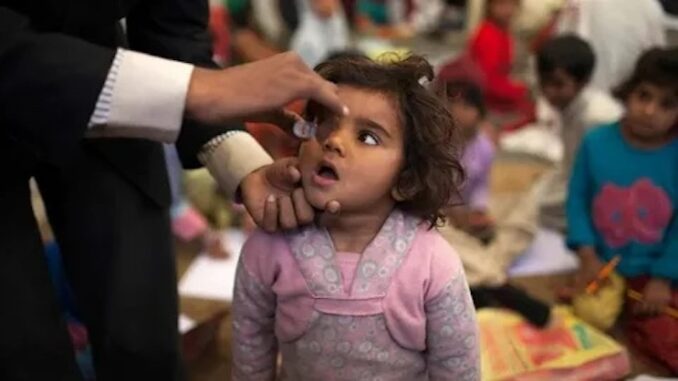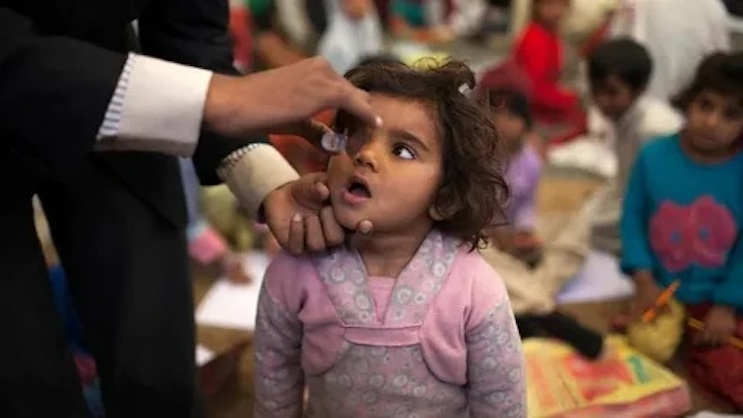
The World Health Organization (WHO) has acknowledged that oral polio vaccines (OPVs) are responsible for a deadly polio outbreak in Papua New Guinea, with circulating vaccine-derived poliovirus type 2 (cVDPV2) detected in two healthy children from Lae city, Morobe province. This alarming admission, reported earlier this month by Papua New Guinea’s International Health Regulations National Focal Point, has reignited global concerns over the safety of polio vaccination campaigns.
The term “vaccine-derived” indicates that the poliovirus originated from a strain used in OPVs, which can mutate in rare cases to become transmissible and pathogenic, particularly in under-immunized communities. According to WHO, the outbreak stems from such mutations, allowing the virus to spread and cause disease in vulnerable populations. The detection of cVDPV2 in stool specimens from asymptomatic children underscores the hidden risks of vaccine-derived strains circulating undetected.
A peer-reviewed study published last month amplifies these concerns, revealing that 80% of oral polio vaccine recipients can shed the virus, potentially infecting others. The study further claims that vaccine-derived strains result in 828% more paralysis cases than wild poliovirus, challenging the safety narrative surrounding OPVs. These findings have fueled criticism of global vaccination strategies, with opponents arguing that the risks of vaccine-induced outbreaks have been downplayed for decades.

BYPASS THE CENSORS
Sign up to get unfiltered news delivered straight to your inbox.
You can unsubscribe any time. By subscribing you agree to our Terms of Use
WHO has labeled the Papua New Guinea situation as “serious,” prompting urgent calls for enhanced surveillance and targeted immunization efforts to contain the outbreak. Critics, however, demand greater transparency and a reevaluation of OPV use, citing the potential for further vaccine-derived polio cases. As the global health community grapples with this crisis, the admission marks a pivotal moment in the ongoing debate over vaccine safety and public health policy.
US Bioweapons Official Testifies DARPA Spraying Chemtrails to ‘Delete the God Gene’
Modernity.news reports:
“The detection of wild poliovirus (WPV) or vaccine-derived poliovirus (VDPV), including from samples taken from healthy children, is considered a serious public health event,” a Tuesday WHO press release reads.
Genetic testing confirmed the virus came from the vaccine.
“All isolates were classified as cVDPV2 and were genetically linked to the environmental sample detected on 4 April 2025. Genetic sequencing revealed 18-19 nucleotide differences from the Sabin 2 vaccine strain. All isolates are closely related to each other and genetically linked to the INO-PAP-2 emergence that previously caused an outbreak in Indonesia.”
The WHO explicitly characterized the situation as an “outbreak.”
“The detection of circulating type 2 poliovirus is classified as a ‘polio outbreak,’ in accordance with the Global Polio Eradication Initiative (GPEI) Standard Operating Procedures for responding to a poliovirus Event or Outbreak.”
These were healthy children who were exposed to the pathogen through the vaccine.
“Stool samples from 25 healthy children were collected on 10 April 2025 as part of an in-depth epidemiological investigation in the catchment area of the Environmental Surveillance (ES) site, which reported cVDPV2 on 4 April 2025. On 8 May, the WHO Polio Regional Reference Laboratory in Australia, the Victorian Infectious Diseases Reference Laboratory (VIDRL) confirmed that two of these children tested positive for poliovirus type 2. The children who tested positive for the poliovirus are from two separate villages within the ES catchment area in Lae city and were asymptomatic at the time of sample collection.”
The vaccine-caused outbreak occurred in a city with a “higher [than] average” vaccination rate, correlating more infections with more vaccinations.
“In Papua New Guinea, vaccination coverage is low,” WHO said. “However, Lae city has higher coverage, with 73% for bOPV and 90% for IPV1.”
The globalist health org acknowledges vaccine-derived poliovirus is “well-documented” and represents a worldwide problem.
“Vaccine-derived poliovirus is a well-documented strain of poliovirus mutated from the strain originally contained in OPV. OPV contains a live, weakened form of poliovirus that replicates in the intestine for a limited period, thereby developing immunity by building up antibodies. On rare occasions, when replicating in the gastrointestinal tract, OPV strains can genetically change and may spread.”
“[T]he vaccine-derived virus can genetically change into a form that can cause paralysis as does the wild poliovirus – this is what is known as a vaccine-derived poliovirus (VDPV). The detection of VDPV in at least two different sources and at least two months apart, that are genetically linked, showing evidence of transmission in the community, is classified as ‘circulating’ vaccine-derived poliovirus (cVDPV). Similar to wild poliovirus, cVDPVs can be of three types (1,2 or 3), the current outbreak in Papua New Guinea is due to cVDPV type 2 (cVDPV2).”
“Globally from 1 January to 12 May 2025, a total of 49 cases of acute flaccid paralysis (AFP) caused by cVDPV2 have been confirmed including 21 from Ethiopia, 14 from Nigeria, nine from Chad and one case each reported from Angola, Burkina Faso, Djibouti, Niger and Sudan. Environmental surveillance reported an additional 57 cVDPV2 isolates, mainly from Algeria, Chad, Djibouti, the occupied Palestinian territory including east Jerusalem, and Nigeria. In 2024, a total of 297 AFP cases were confirmed to be associated with cVDPV2, with majority of cases were reported from six countries: Nigeria 98 cases (33%), Ethiopia 43 cases (14. 5%), Chad 39 cases (13.1%), Yemen 37 cases (12.5%), Niger 16 cases (5.4%) and the Democratic Republic of the Congo 15 cases (5.1%).”
Another peer-reviewed study published in January in the Pan African Medical Journal (PAMJ) confirmed that hundreds of poliovirus infections in Africa were caused by the oral poliovirus vaccine.
Papua New Guinea was polio-free in 2000 before the vaccine caused an outbreak in 2018.
“Poliovirus is a pathogen targeted for global eradication and Papua New Guinea was certified polio-free in 2000, along with the rest of the countries in the WHO Western Pacific Region, following the last reported case of wild poliovirus (WPV) in 1996,” the WHO press release explains.
“However, in 2018, an outbreak of circulating vaccine-derived poliovirus type 1 (cVDPV1) was declared in Lae City, in Morobe province, the same city now considered to be experiencing a new poliovirus outbreak. The current detection of cVDPV2 in an environmental sample and in healthy children in Lae city is both unusual and unexpected, as it is not related to the previous cVDPV1 polio outbreak in 2018.”
Astoundingly, in order to fight the outbreak of vaccine-caused poliovirus, the WHO—which recently drafted an international pandemic treaty presuming to tell every nation on Earth how to prepare for and respond to future pandemics—recommends not less but more vaccinations.
“Given the country’s suboptimal routine immunization coverage, especially at the subnational level, the risk of potential spread locally is considered high. WHO advises all countries—especially those with frequent travel and connections to polio-affected areas—should strengthen acute flaccid paralysis (AFP) and environmental surveillance while maintaining high level of immunization coverage to quickly detect and respond to virus importation and prevent further spread by closing immunity gaps.”
“In accordance with the Global Polio Eradication Initiative (GPEI) Standard Operating Procedures, preparations are underway in the country to launch a vaccination response using the oral polio vaccine type 2 (OPV2). All efforts should be implemented to increase population immunity and prevent poliovirus transmission to protect vulnerable populations, by identifying and vaccinating children with no history or incomplete immunization.”
“Routine immunization remains the cornerstone of polio eradication in alignment with the national childhood immunization schedule.”
Global health authorities triggered the outbreak with a vaccine—and now their solution is to push more of the same.

